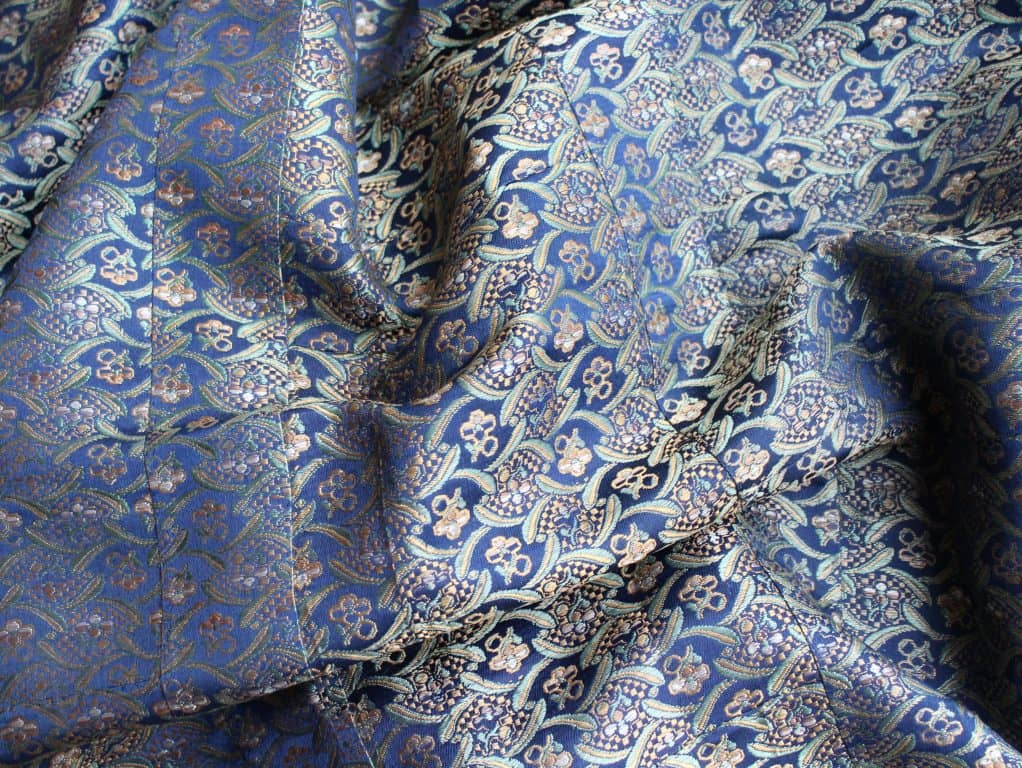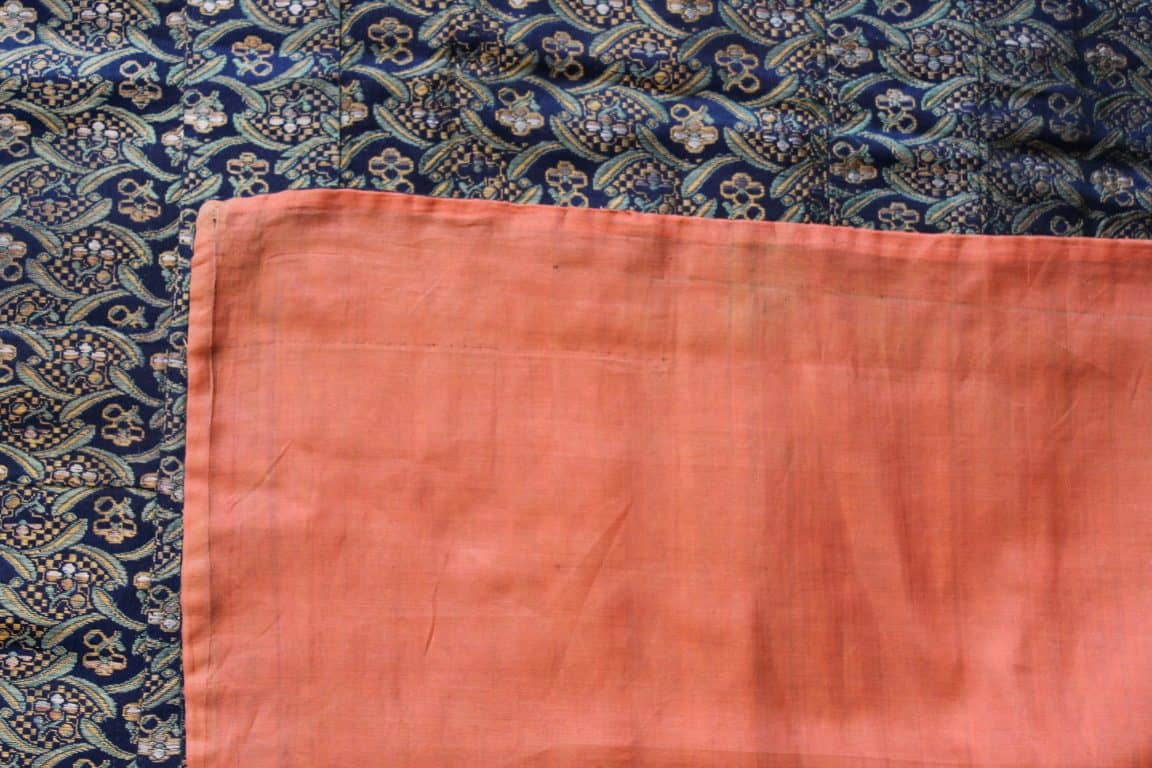Japanese Priest’s Robe (Kesa)
Description
Japanese priest’s or monk’s robe, also called kesa, from the early Meiji or late Edo periods, possibly dating to the mid 19th century.
Kesa were worn as a stole draped over the left shoulder of its wearer. The term is derived from the Sanskrit word kasaya, a reference to a dark colour (brown or dark saffron) traditionally worn by Buddhist monks and nuns.
Structurally, kesa are made up of several pieces of material, very much like a patchwork, following a repeating pattern: an outer border encloses a field comprising of several strips of the same material, usually between five and 25 (see also the Art Institute Chicago’s exhibition of Kesa: Japanese Buddhist Monks’Vestments https://www.artic.edu/exhibitions/3031/kesa-japanese-buddhist-monks-vestments . It ran from 21 August 2015 to 28 February 2016 and saw 23 of their collection of some 200 kesa exhibited)
In our kesa, seven strips of either 17.5 cm or 22.5 cm width alternate with six strips of approximately 5.5 cm width each. A square patch in each corner, again of the same material, adds strength to the garment. This is a practical reading of the presence of the corner patches. It has been suggested that there is also a spiritual side to this construction: if you see the field as a mandala, the corners represent the Four Heavenly Kings (Shi Tenno in Japanese) guarding the four cardinal directions of the mandala, i.e. the cosmos. See also https://www.buddhistdoor.net/features/kesa-robes-of-patched-perfection
Since these garments were only worn by Buddhist monks and priests, this is a likely interpretation.
The fact that kesa were made up of fragments was of symbolic importance,too: it signified the humble status of the wearer, in accordance with Buddha’s own life in poverty, even if the garment was composed of a very luxurious and sumptuous material like, in our case, a wonderful silk brocade. The cloths used in the production of the kesa were often recycled from other garments or were donated by wealthy devotees
This kesa is lined with a plain, salmon-coloured silk and is in excellent condition
SOLD


